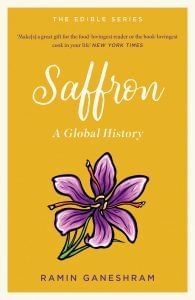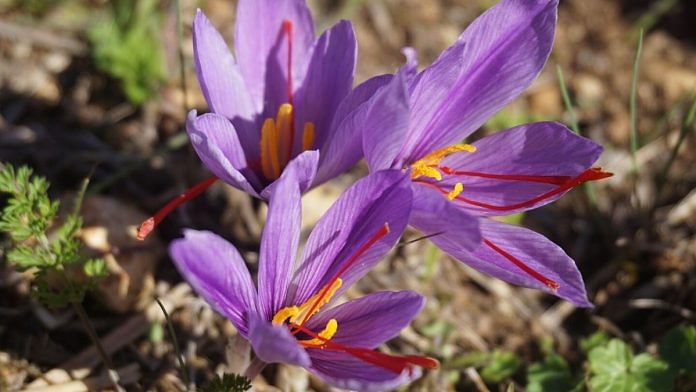Saffron is graded on three major qualities: its aroma (safranal), its strength as a colourant (crocin) and its taste (picrocrocin). Saffron is further graded by the quality of the stigma, with all-red stigmas being Grade 1 or A+; Grade 2 or A contain the red stigmas and a bit of the yellow or white base (style); Grade 3 or B is bunched saffron with the entire style attached.
These grades are named differently for Spanish and Iranian varieties as follows:
Iranian
Iran produces go per cent of the world’s saffron, and Iranian (Persian) saffron is generally considered to be the best quality behind the rarer Kashmiri saffron. It is graded as follows:
Super Negin: Most robust in aroma and flavour, this saffron contains only red threads that are uniformly trimmed. As such, there is less breakage or powdering of the saffron in the package. This is the most expensive and desirable grade of Iranian saffron.
Sargol: Literally translated from the Persian language of Farsi as the flower’s head’, this saffron comes from the red tips of the stigma without any yellow or white threads (styles). As a result, this saffron is quite short and the colour a deep red.
The aroma is quite strong. Sargol saffron can break or crumble in the package because its lack of length makes it less supple, but it is still considered a high-quality saffron.
Negin: This saffron contains yellow and orange portions of the stigmas and is generally longer than the Super Negin and Sargol grades. The quality is still good but the presence of the yellow and orange stigma portions will affect the intensity of colour, aroma and taste.
Poshal: This saffron is the least expensive and comprises the orange and yellow parts of the crocus stigmas, generally considered the saffron ‘trim’. While still technically saffron, this is the cheapest quality of saffron and is considered an inferior product.
Also read: What amounts to cruelty in Indian divorce cases—not wearing mangalsutra, sindoor
Spanish
The Spanish region of La Mancha accounts for only 4 per cent of the saffron grown in the world, yet it exports 40 per cent of the world’s saffron. How does this maths add up?
Because Spain acts as middleman for Iranian saffron, which was largely impeded from distribution because of worldwide sanctions after that country’s Islamic Revolution in 1979. As a result, the grades of Iranian saffron are rebranded in Spain as follows: Sargol = Coupe; Poshal = La Mancha. Actual La Mancha saffron grown in Spain will carry a Denomination of Protected Origin (DOP), which serves to ensure the authenticity of this rare and protected version of the spice. Regardless of country of origin of the product, saffron vendors are required to hold certificates of origin for saffron, so buyers who want to know exactly where their saffron comes from can ask for this documentation.
Also read: When Ghadarites supported German ambition of invading India. Kashmir was key to their plan
Kashmiri
Grown in the Pampore region of Kashmir, a Muslim state in India, Kashmiri saffron is widely considered to be the finest quality in the world. Unlike Persian or Spanish saffron, which is most often presented as single stigmas, Kashmiri saffron is usually sold in a loose tangle. There are two varieties: one in which the yellowish-white ‘style’ (a tube-like stalk) is still attached to the stigma, considered the lesser of the two varieties; the second variety is pure stigma. Kashmiri saffron threads are extremely long, with a thick head and an exceptionally deep red colour. The sizes of these stigmas indicate the inherent suitability of the soil and climate in Kashmir for growing this product. The difference between this and other saffron is so marked that saffron from this region can usually be discerned by observation alone. Already the costliest saffron on the modern market, drought and political strife have limited production over the last decade, which will, no doubt, continue to drive prices up further.
 This excerpt from Ramin Ganeshram’s ‘Saffron: A Global History’ has been published with permission from Pan Macmillan India.
This excerpt from Ramin Ganeshram’s ‘Saffron: A Global History’ has been published with permission from Pan Macmillan India.





As an Ieanian producer and seller of Saffron, I would like to revise the text.
According to drying type of saffron, Negin is divided: Super Negin is dried by new technologies and machines and is longer, shiner than Negin and more colourful as well.
But Negin is dried traditionally. Both of the are completely red without any yellow and white color.